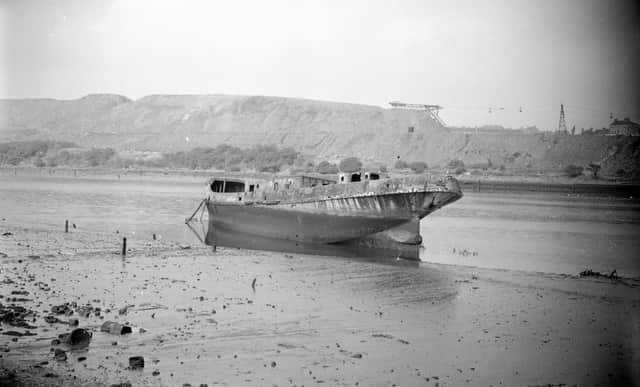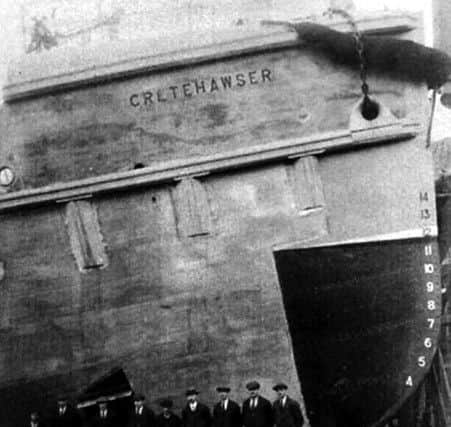The days when the city made their boats - out of concrete


A new bridge is taking a shape amid lots of publicity.
But what some people may not know is the unusual sight in the Wear itself.


Philip Curtis, of the Sunderland Antiquarian Society, believes it could be more of a landmark once the city’s newest structure is completed.
Advertisement
Hide AdAdvertisement
Hide AdThe completion of Sunderland’s new bridge took a step closer last week.
The arrival of its central pylon has brought the new structure a step closer.
Once the bridge is in use, Wearsiders will be able to enjoy new vistas of the River Wear. And that will include the remains of one of Sunderland’s historic concrete tugs, The Cretehawser which is a short way upstream stranded on the riverbank.


It seems odd that any vessel would be built of concrete but the decision to use that material was taken during the First World War.
Advertisement
Hide AdAdvertisement
Hide AdIt came after the country suffered huge shipping losses which was caused by enemy submarines.
It was hoped that concrete tugs would be cheap to build and, even if they were damaged, they could just be repaired by using an application of fresh cement.
The only parts on the tugs that were made from wood were the bridge and part of the deck.
With this in mind, Cretehawser was built at Southwick by the Wear Concrete Building Company.
Advertisement
Hide AdAdvertisement
Hide AdThe Wear Concrete Building Company had opened on the river in 1918 in order to build in an alternative material to steel.
The plan was not without its difficulties, though.
Construction work was dependent upon the weather as frost prevented work altogether and hot weather dried the concrete too quickly. During building, a waterpoof compound was added to the concrete.
On Saturday, March 15, 1919, Sunderland’s very own concrete tug was launched.
The Cretehawser was a sea-going tug of 262 tons, 125 feet in length and usually had a crew of 12 people.
Advertisement
Hide AdAdvertisement
Hide AdShe was quickly followed by her sister tugs, Creterope and Cretecable from the same yard. They were designed to tow large concrete barges carrying iron.
Nine other concrete tugs were built at other yards in the country and that included six at Shoreham and two at Amble and all the tugs were given names starting with the prefix Crete.
However, once the war was over, the tugs found it difficult to compete in the large shipping market.
That was because it was discovered that they were costly to operate and carried high insurance premiums and harbour dues.
Advertisement
Hide AdAdvertisement
Hide AdCretehawser carried on working until 1935 before being sold to the South Stockton Shipping Company for scrap.
Along with another concrete tug, the Cretestem, she was then bought by the River Wear Commissioners.
Both were moored in the South Dock with the intention of using their hulls as an emergency in the event of winter storms ever breaching the breakwaters near the pier.
They remained in the South Dock until 1942 when, during a German air raid in the Second World War, both concrete tugs were damaged and holed.
Advertisement
Hide AdAdvertisement
Hide AdThe remains of the Cretestem were quickly towed out to sea and dumped but the Cretehawser was left in the dock.
However it eventually became a hazard to shipping within the dock and, as a result, had to be removed.
But instead of being dumped at sea, a decision was made to tow it up the river and this was duly carried out by the tugs Annie Ritchie and Cinema Star.
It was eventually left opposite the old Hylton Colliery, which is close to where she was first built.
There she lies quietly today.
But could it be that once the new bridge is in operation Cretehawser could even become a local attraction?
Albeit a wreck, she is one of the few remnants we have left of our great shipping heritage.